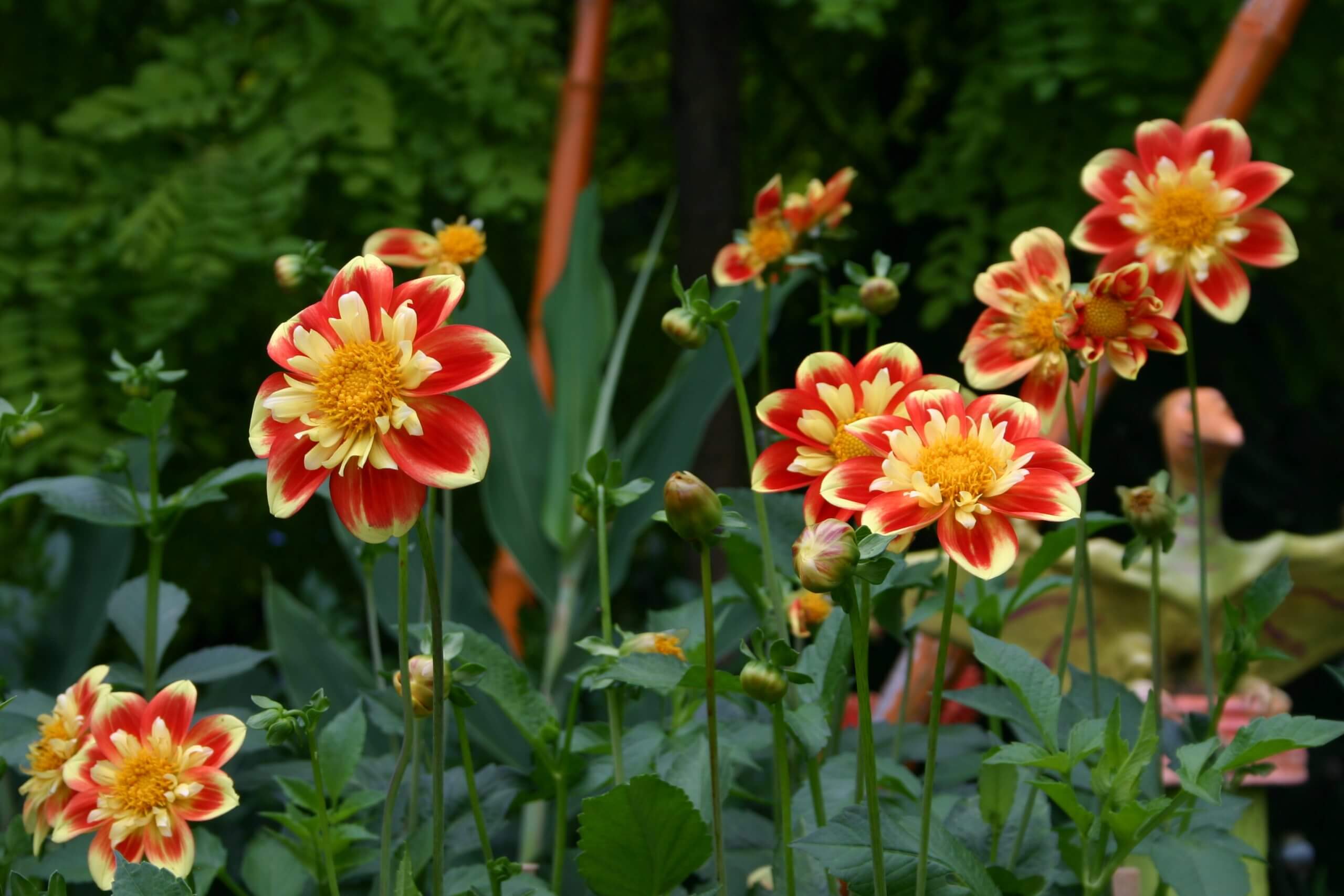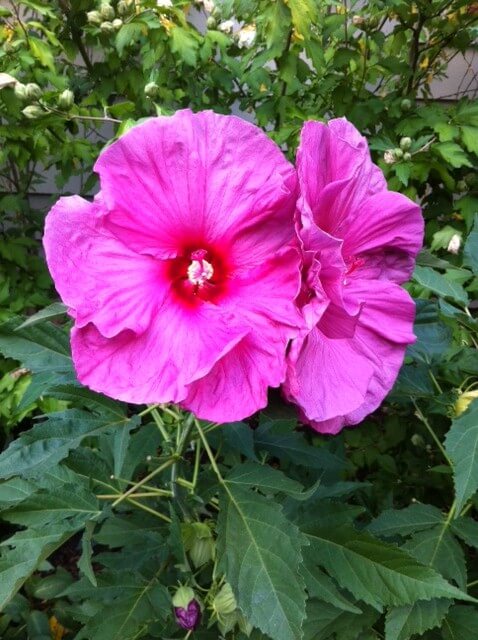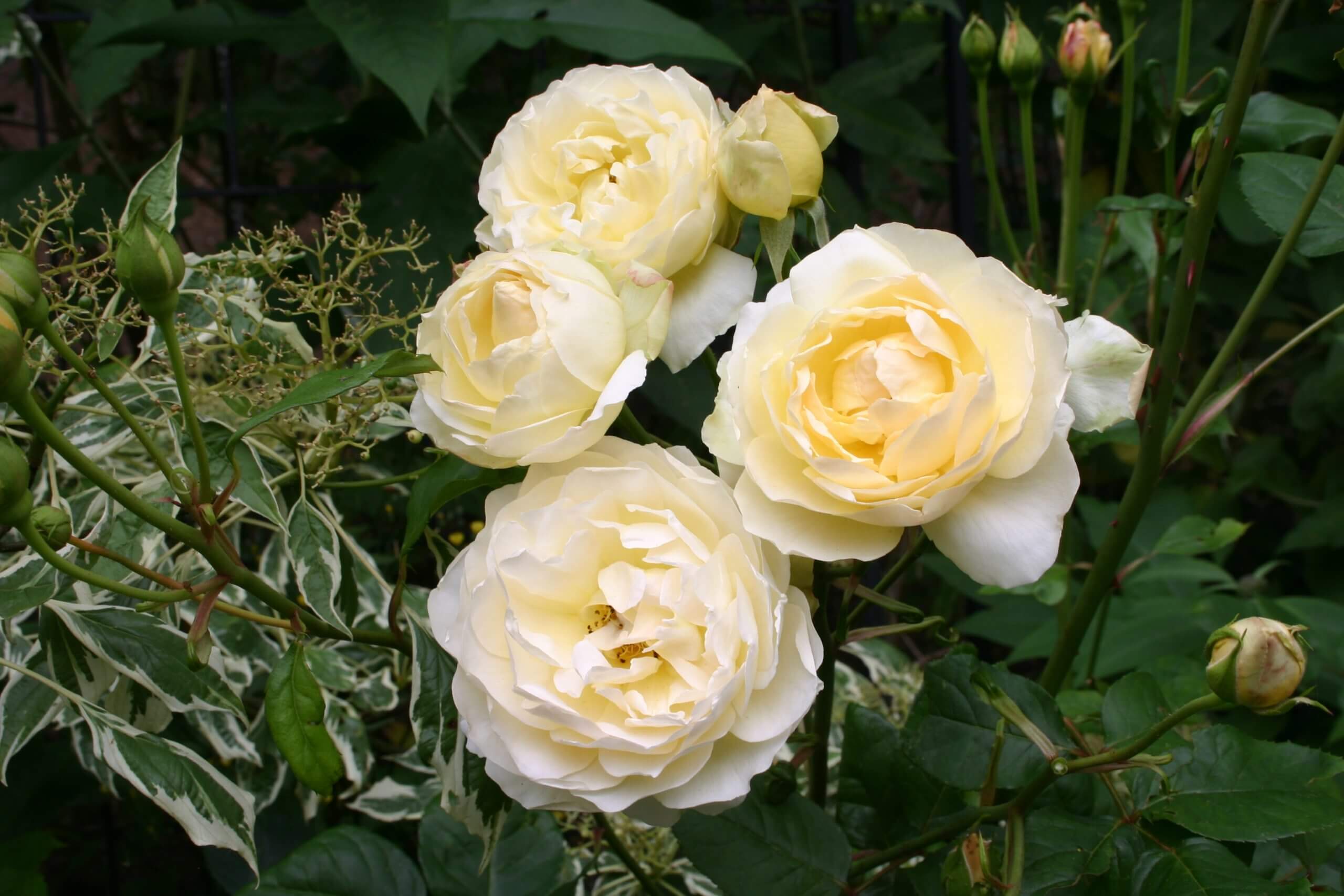
When visiting other gardens and with other gardeners, I find that people enjoy sharing their tips to make gardening easier. Even in my own garden, I often realize there is a better and quicker way to perform a particular task, and I cannot imagine why I had not thought of it before. Particularly on my radio program, when I ask listeners call in with tips, I almost always learn something new. Even though gardening is very enjoyable, I think gardeners are always on the lookout for a easier and quicker way to get something done.
 Mulch and Amend Soil
Mulch and Amend Soil
With the hot and dry summer we have had here in the Pacific Northwest, just keeping plants adequately watered has been a major time-consuming task. With the many plants that I have in containers around my garden, by this time of year many of them have become root bound, having grown in the pot all summer, and hence they dry out quickly. Adding several inches of Black Gold Just Coir on the top of the soil was an immense help in preventing the pots from drying out so quickly.
Stake Tall Flowers
Dahlias need to be staked, especially the taller and larger flowering types, but even some of the smaller flowering dahlias will benefit from staking, especially in late summer and early fall when there has been wind and rain. Since the underground tuberous roots of dahlias grow and spread so rapidly during the growing season, by trying to put in a stake for support when they are blooming can often cause damage to the tubers. A tip here is to put the stake in the ground when the tuber is being planted. Then the plant can be tied to the stake as it grows, and there is no need to be adding a stake during the flowering season with the possibility of injuring the tubers.

Plant Effortless Flowers
One of my favorite effortless summer flowers is the hardy Hibiscus (Hibiscus moscheutos). It performs very well in the Pacific Northwest and is becoming increasing popular with gardeners as they realize that it truly is hardy and easily survives our winters. For many years, Hibiscus was only thought to be the tropical and semi-tropical plant of Hawaii and Southern California but this is not the case with eastern native, true hardy hibiscus.
The attribute of growing hardy Hibiscus here is that they form a shrub early in the season and then withhold their blooms until late summer, usually August and September. Not many other perennials are blooming at this time, so they provide much-needed color in the garden. Then when we get a frost, they can be cut to the ground. These Hibiscus tend to be very late in emerging from the ground in the spring, sometimes as late as April. A tip a listener gave me was to put a small green bamboo stake or some kind of marker by the clump when they are cut down so that in the spring they have not been forgotten and something else planted on top of them. It is also a reminder not to dig around the clump and disturb the roots.
Prune and Clean
I always think of roses when considering the importance of pruning and cleaning summer flowers. For gardeners with beds of roses or just many roses planted in the landscape, they will know that when it comes to pruning time there can be a large amount of debris. A suggestion is not to wait until it is time for the major pruning, but to do small amounts of pruning now. For example, when using roses for cut flowers or removing the spent flowers, make the cuts longer than you might normally do to remove some of what will pruned off at a later date. Doing some additional pruning now will not harm the rose bush.
Keep Records
Autumn is also an ideal time to do some garden editing. I take photos of my flower beds at this time and then review them in the winter. There are many gardeners, like me, that tend to over plant, and while the flower beds may look good in the early spring, by summer they can look overcrowded. Taking photos now will be a reminder of what can be changed design-wise over the winter. Even if it is just transplanting plants around to different locations in spring, having photos can be a valuable guide.
If you have some gardening tips that you would like to share, I am always interested in hearing about new ideas. Gardens are ever-changing and so are gardeners and it is great fun to share stories.


